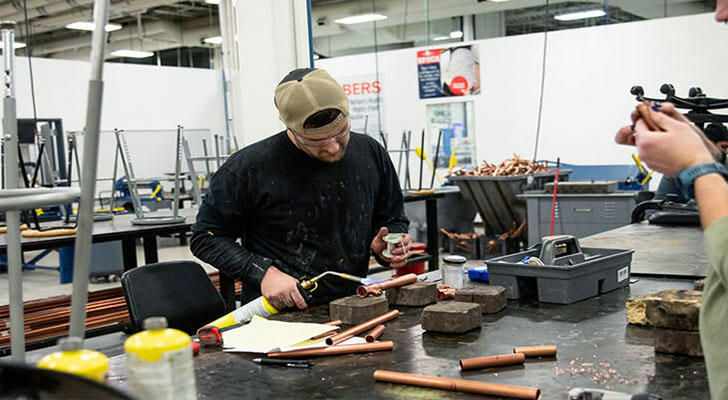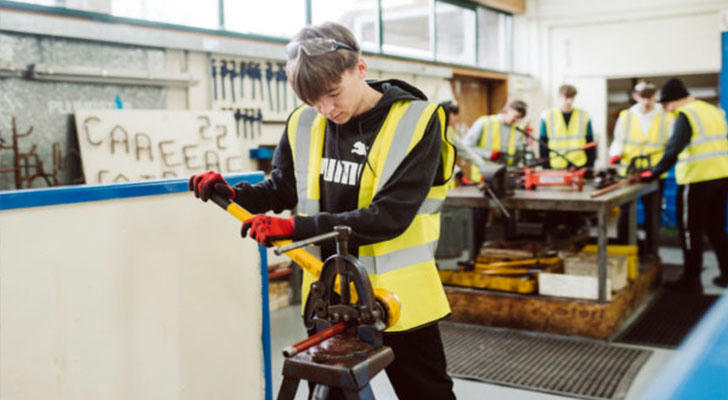Pipefitter Apprenticeship Programs in the USA: A Comprehensive Guide
Pipefitting is a skilled trade that involves the installation, maintenance, and repair of piping systems used in various industries such as construction, manufacturing, and energy. In the United States, becoming a professional pipefitter typically requires completing an apprenticeship program that combines classroom instruction with hands-on training. This guide provides a detailed overview of pipefitter apprenticeship programs in the USA, outlining the training process, educational requirements, career prospects, and what aspiring pipefitters can expect.

What Is a Pipefitter Apprenticeship?
A pipefitter apprenticeship is a structured training program designed to prepare individuals for a career in pipefitting. These programs usually last between four and five years and include a blend of classroom education and on-the-job training under the supervision of experienced pipefitters. Apprentices learn essential skills such as blueprint reading, welding, pipe cutting, assembly, and safety practices.
The apprenticeship model allows participants to earn a wage while gaining practical experience, making it a popular pathway into the trade. Apprentices gradually take on more complex tasks as their skills develop, ultimately qualifying as journey-level pipefitters upon program completion.
Educational Requirements and Entry Pathways
Typically, applicants need a high school diploma or equivalent to qualify for pipefitter apprenticeships. Some may choose to attend vocational or technical schools before entering an apprenticeship to acquire foundational knowledge in areas like welding, blueprint reading, and mathematics. These preparatory programs can range from several months to two years.
However, the most recognized and direct route remains the formal apprenticeship itself. Apprenticeship sponsors include unions, trade associations, and employers, who provide both classroom instruction and paid on-the-job training. The curriculum covers a wide range of topics, including:
- Safety codes and regulations
- Blueprint and schematic reading
- Mathematics and applied physics relevant to pipefitting
- Welding and brazing techniques
- Use of hand and power tools
Structure of Pipefitter Apprenticeship Programs
Apprenticeship programs typically require approximately 2,000 hours of classroom and lab training combined with 8,000 hours of supervised work experience. This blend ensures that apprentices develop both theoretical knowledge and practical skills.
The training is progressive, beginning with fundamental tasks such as material handling, basic pipe cutting, and tool use. As apprentices advance, they learn complex pipe layout, welding, system installation, and troubleshooting.
Many programs include safety certifications such as OSHA 10 or OSHA 30, which are often mandatory for construction and industrial job sites. These certifications help apprentices understand workplace hazards and proper safety protocols.
Career Advancement and Certification
Upon completing an apprenticeship, pipefitters earn journeyman status, which qualifies them to work independently and take on supervisory roles. Many journeymen continue to pursue additional certifications from organizations like the American Welding Society (AWS) to specialize in particular welding methods or piping systems.
Some pipefitters advance further to become master pipefitters or supervisors, overseeing large projects and teams. Others may choose to start their own businesses or move into related fields such as plumbing or HVAC.
Salary Expectations
Pipefitter salaries vary depending on experience, location, and union affiliation. Apprentices typically earn a percentage of a journeyman’s wage, starting lower and increasing as they gain skills. Journey-level pipefitters can expect competitive wages, often ranging from $25 to $45 per hour, with opportunities for overtime pay.
Unionized pipefitters often receive comprehensive benefits, including health insurance, retirement plans, and paid leave. Non-union workers may have more variable benefits depending on the employer.

Finding and Applying for Apprenticeship Programs
Prospective pipefitters can find apprenticeship opportunities through local unions, trade associations, community colleges, and employers. The United Association of Journeymen and Apprentices of the Plumbing and Pipe Fitting Industry is a prominent sponsor of apprenticeship programs in many regions.
Application processes usually involve submitting an application, passing aptitude tests (often covering math and reading comprehension), and attending interviews. Some programs may require physical fitness assessments due to the demanding nature of the work.
Benefits of Completing an Apprenticeship
- Earn While You Learn: Apprentices receive wages throughout the training period, which increase as skills improve.
- Comprehensive Training: The combination of classroom and hands-on experience ensures well-rounded skill development.
- Industry Recognition: Completing an apprenticeship is widely respected and often required by employers.
- Career Stability: Skilled pipefitters are in demand across various industries, offering strong job security.
Challenges to Consider
While pipefitting offers rewarding career opportunities, the work can be physically demanding, requiring strength, stamina, and comfort working in confined spaces or at heights. Apprentices must also be prepared for exposure to varying weather conditions and potentially hazardous materials, making safety training essential.
The training period is lengthy, requiring commitment and persistence. However, the long-term benefits in terms of career prospects and earning potential often outweigh these challenges.

Conclusion
Pipefitter apprenticeship programs in the USA provide a comprehensive pathway to a skilled and well-compensated trade. By combining rigorous classroom instruction with extensive on-the-job training, these programs equip individuals with the knowledge and experience necessary to excel in the field.
For those interested in a hands-on career with strong demand and opportunities for advancement, pursuing a pipefitter apprenticeship represents a practical and rewarding option. Understanding the structure, requirements, and benefits of these programs can help aspiring pipefitters make informed decisions about their career paths.
As industries continue to rely on complex piping systems, the role of skilled pipefitters remains crucial, ensuring steady employment prospects for those entering the trade through apprenticeship programs.
